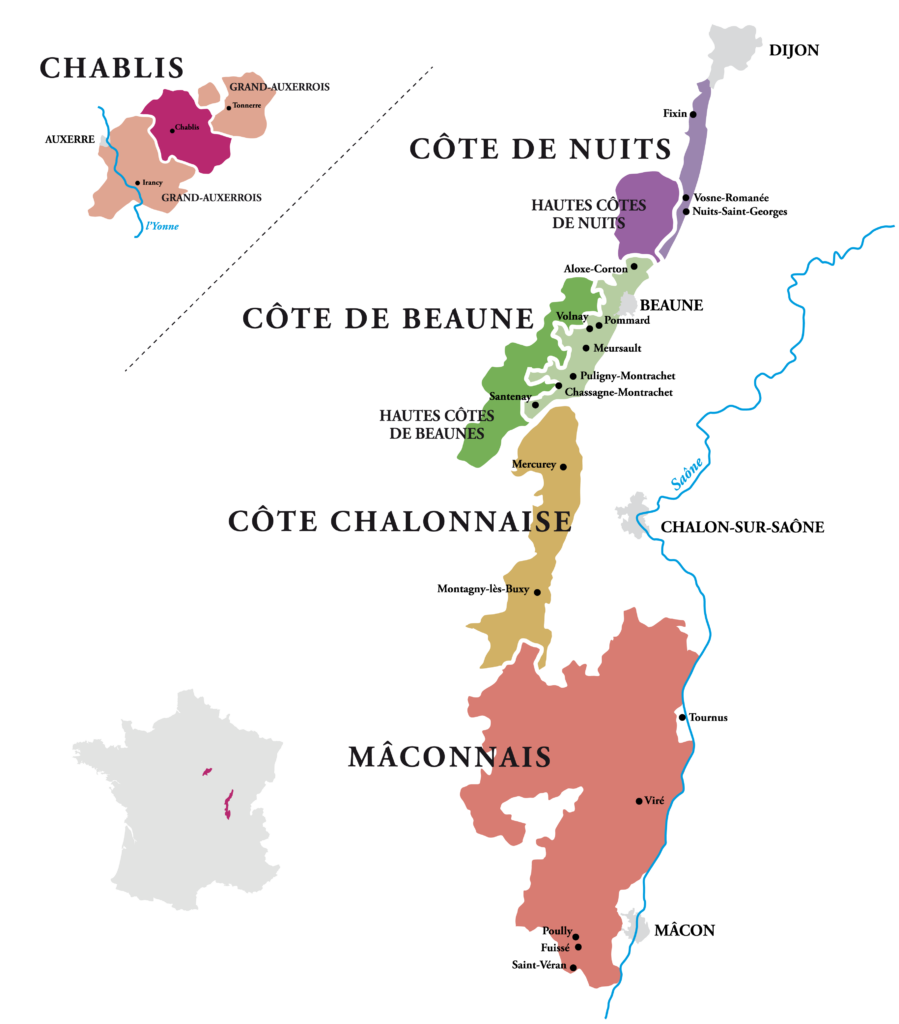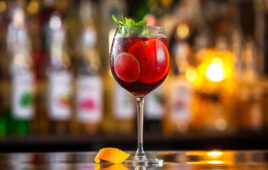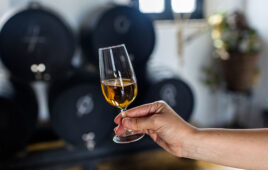
At $10,000 to 15,000 per bottle (or more), purchasing a bottle of Burgundy’s best—Domaine de la Romanee Conti—is out of reach for most of us. Fortunately, there are value-driven alternatives from the same region. And with a little research, you can try them and offer them to your members.

Geographically, Burgundy is separated into four sub-regions (listed northernmost to southernmost): Chablis, the Côte d’Or, the Côte Chalonnaise, and the Mâconnais.
For this article, we will focus on the Côte d’Or. This is the “golden slope” of Burgundy and begins in the sub-appellation of Marsannay. It continues south to the southernmost region of Santenay. The Côte d’Or is split into the Côte de Nuits and Côte de Beaune. The Côte de Nuits is famous for Pinot Noir, and the Côte de Beaune is known for Chardonnay. Most of Burgundy’s best vineyards are found in this very narrow 31-mile strip of land.
The Côte d’Or appellation produces wine from Pinot Noir and Chardonnay grapes. A question always asked is “why are the wines so different in this region?” The answer is not as simple as the question. The winemaker has a lot to do with it. The location, soil, aspect and altitude also tremendously influence the outcome – a symbiosis called terroir.
The Grand Cru of Burgundy only represents 1.4% of total production. The Premiers Crus represents a mere 10.2%, and the rest is taken up by village wine and “Appellations Régionales” of which there are 23 appellation d’origine contrôlée (AOC).
Why does all this matter? The appellation d’origine contrôlée establishes all criteria for wine production in the region. The AOC system was created to give wine consumers a quality guarantee according to guidelines set forth by the region’s growers.
The 33 wineries in the Grand Cru in the Côte d’Or are mostly planted on limestone, have the right elevation and aspect, and are sheltered from the elements. These wineries also have strict guidelines to follow. Wine in the Grand Cru can only be made with grapes from a Grand Cru vineyard so most wineries plant at 10,000 vines per hectare (spacing 1 meter by 1 meter). They must prune to 6 buds per vine and use the Guyot or Cordon training system. They only harvest 30 hl/ha to keep the wine concentrated. They also follow the Napoleonic rule, which states that all inheritance must be equally divided among heirs. This further contributes to the parceling of Burgundy’s vineyards. This subdivision means that a once monopole vineyard, like Clos de Vougeot, might have 50 or 60 owners today, each with barely enough vines to make a case of wine. These are just some reasons why Grand Cru wine is so expensive.
So how do you sample the wines from this region and offer them to your members?
You know where to go if you or your members seek the best. But you don’t always have to settle for the best. Start with the Premier Cru wines. This is where you will find value and quality. The Côte d’Or has 42 plots classified as Premier Crus. To be a Premier Crus, the bottle must be marked “Appellation 1er cru contrôlée” with the town’s name listed. (For example: “Appellation Beaune 1er Cru.”)
You can also look at Bouzeron. In 1970, Aubert de Villaine, the estate co-owner of Domaine de la Romanee Conti, started a project in Bouzeron, located in the Côte Chalonnaise, where he set up Domaine de Villaine. This region south of Côte de Beaune allows Aligoté grapes to be grown. Domaine de Villaine produces about 16 labels from this winery but also brings grapes from other sub-appellation to build the portfolio. Try Saint Aubin 1er Cru Les Perrières, a wine that exhibits notes of yellow fruit, crushed apple, roasted nuts, and a chalky mineral-driven wine with hints of sweet spice.
You can also explore Vougeot, a tiny parcel between Chambolle-Musigny and Vosne-Romanée. Here you will find Winemaker Eva Reh from Domaine Bertagna. In 1954 Reh’s grandfather acquired his first vines in Chambolle-Musigny. In 1982, he was allowed to purchase Domaine Bertagna in Vougeot. The rest, as they say, is history. I recommend a bottle of Vougeot Premier Cru ‘Les Petits Vougeot’. This wine is rich and deep with cooked fruits, spices, and licorice aromas. It has a fine and delicate body, roundness, and richness typical of this appellation.
Another great option is Morey-Saint-Denis, where you’ll find Domaine Stéphane Magnien, which makes superb, subtle terroir wines from its 4.6 hectares. Look for the entree level Magnien, Stephane Coteaux Bourguignons Pur, Pinot Noir. The wines typically show bright deep red color, exquisite aromas of ripe strawberry, red currant, and red cherry, and a typical floral aroma of violets. The palate will be rich and vibrant with more red currant and lambert cherry lifted by bright acidity and a long finish.




